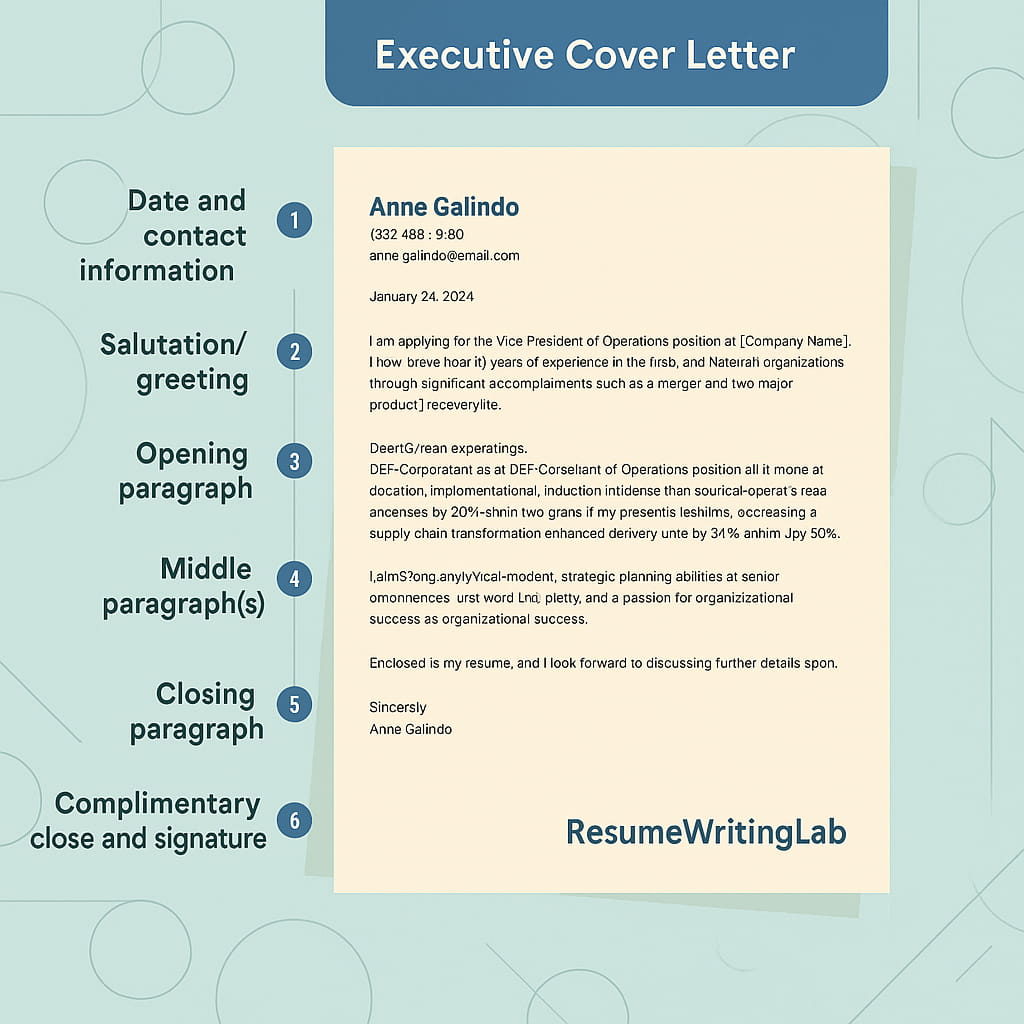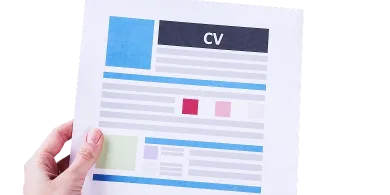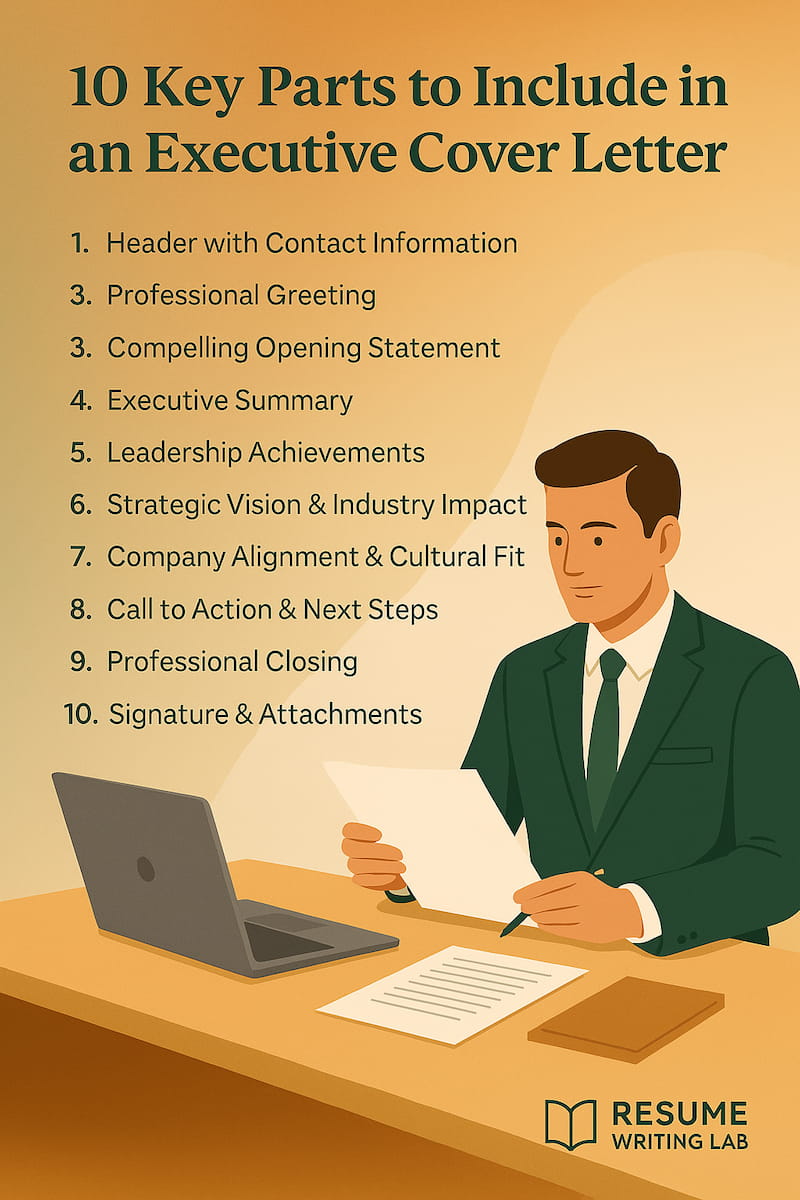Table of contents

Do you think your resume is enough? Think again.
Most executives think their experience speaks for itself, but here’s the truth: hiring managers skim your applications in seconds. While a strong resume will get you noticed, you need a cover letter to seal the deal. That’s because lots of hiring managers read cover letters, even at companies where they’re not required.
Here’s the problem – most cover letters are dry, generic, and forgettable. They either repeat what’s already on the resume or fail to highlight the candidate’s leadership impact.
But your executive cover letter isn’t just a formality; it’s a chance to tell your story and prove you’re the right fit for the target role. This brings up the topic of the day.
This guide will walk you through writing an executive cover letter that gets results.
Learn how to write a cover letter that demands attention.
Let’s be honest – recruiters don’t have the patience or desire to read walls of text. In other words, don’t give them one. You should aim for a cover letter that’s clean, well-structured, and, most importantly, easy to skim. Here’s a few tips from our cover letter writers on how you can format your cover letters:
Give your cover letter a format befitting of an executive.
Also read: Are cover letters double-spaced?

You can’t afford to take your cover letter headers lightly because they can make or break your chances in the job application. 41% of hiring managers say the introduction is essential to a cover letter, and 26% of recruiters consistently read the cover letters. In a nutshell, first impressions matter, so you have to get it right.
Now, what should you include in your header? You should start with your name, job title, phone number, email, and location (city, state). If you want to stand out from the crowd, take it a step further by adding your LinkedIn profile or personal website.
Next, use a proper date format. The date on your cover letter should appear as March 25, 2025, not 25/03/2025.
Lastly, address the letter to a real person, not an abstract entity. Hiring managers love it when you make the effort and will most likely reward it by granting you an interview. So, research by checking the company’s LinkedIn page or website. If you can’t get a name, simply address it as “Dear Hiring Manager.”
Set the tone with a strong header.

As our executive resume writers perfectly put it, don’t lose their interest before you’ve even started convincing them. So, skip the cliché and grab their attention from the first sentence. Here’s how you can do that:
Make your opening lines count
When it’s time to talk about your work experience, don’t ramble on about the descriptions of the previous jobs you did. That won’t do you much good. Instead, talk about your impact in your last roles; that’s what recruiters seek.
Firstly, when listing your key achievements, use numbers rather than vague claims to show measurable results. For example, “I increased annual revenue by 40% through strategic restructuring.” Another example is “I led a team of 50+ professionals, improving operational efficiency by 25%.”
Secondly, show your leadership in your achievements. Take a look at the second example, for instance. Did you see how we started it? That’s what we mean.
Thirdly, turn challenges into wins. Here’s an example: “I revamped an underperforming department and turned it into a top revenue driver within 12 months.
This may come as a surprise, but 36% of hiring managers devote less than 30 seconds to a single cover letter. So, you need to prove you’re the perfect fit for their recruiting role. In other words, are you just a leader or the right leader?
Here’s how you can prove you’re the perfect fit:
Show them you’re not just qualified but the leader they’ve been looking for.
End strong and leave a lasting impression with the hiring manager. Let’s show you how:
Seal the deal with confidence.
As we said earlier, being qualified isn’t enough. You have to make sure your cover letter is free of mistakes that could ruin your chances. Here are some of them:
| Mistakes to avoid | The Solution |
| Being too generic | Customization is key when it comes to writing cover letters. Avoid copy-pasting from templates and add your personal touch. |
| Repeating your resume | You should write your cover letter to tell a story about your biggest achievements in your resume. |
| Typos and grammatical mistakes | You must proofread your cover letter multiple times to avoid errors that could kill your credibility. |
| Sounding too arrogant or modest | Don’t oversell yourself with statements like ‘I am the best candidate’ or undersell yourself by being too humble. Strike a fine balance by showing your value with your achievements. |
| Don’t use a complicated format | You should keep things simple with a clean and professional layout. Avoid fancy fonts and excessive styling. |
Make your cover letter error-free today.
Think about it: a job application is like a game of chess, and your cover letter should be like a checkmate. It’s your chance to show leadership, impact, and alignment with the company’s vision. Remember – make it compelling and concise, and prove you’re the right fit. When you keep all these in mind, we’re confident you’ll write a cover letter that demands attention and gets results.